#modern warfare graphic novel
Text

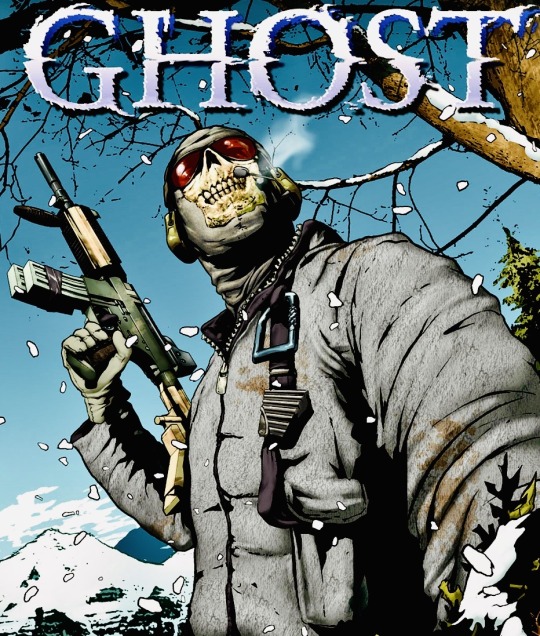

“But we’ll get to that in a minute.”
Modern Warfare 2: Ghost Comic
#MW2#modern warfare comic#simon ghost riley#simon riley#mw2 ghost#COD ghost#Modern Warfare 2: Ghost comic#modern warfare graphic novel#call of duty#modern warfare#ghostedit#simonrileyedit#Simon ghost Riley gif
163 notes
·
View notes
Text
modern warfare 2: ghost #1
warnings: blood, violence, some sexual themes
(this will be broken into parts because i can only post so many pictures at a time!)
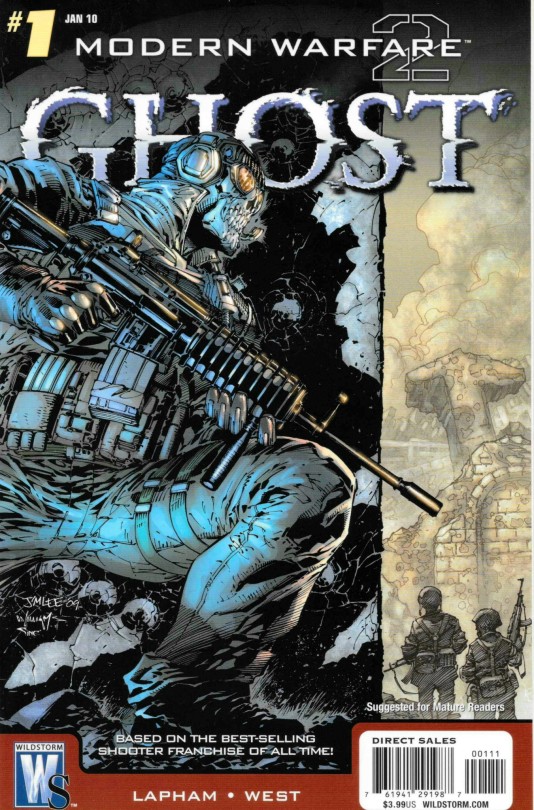






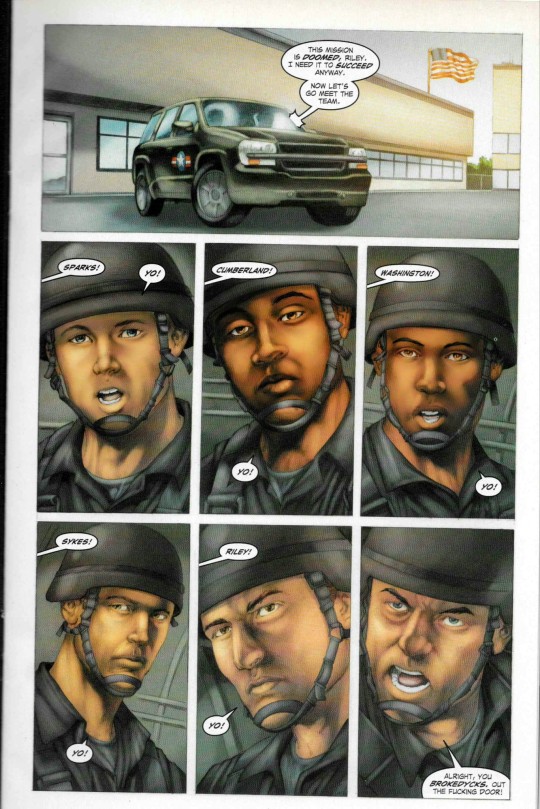


to be continued...
142 notes
·
View notes
Text
God I hope that the announcement of James L Barry's retirement doesn't spark hatred for the new artists, or worse off, generational warfare inside the fandom.
A big impression I get from these new graphic novels is a push to appeal more to a newer, younger demographic (zoomers, as people like to say)
Looking at the works of Natalie Riess and Sara Goetter, they clearly have a far more modern YA style
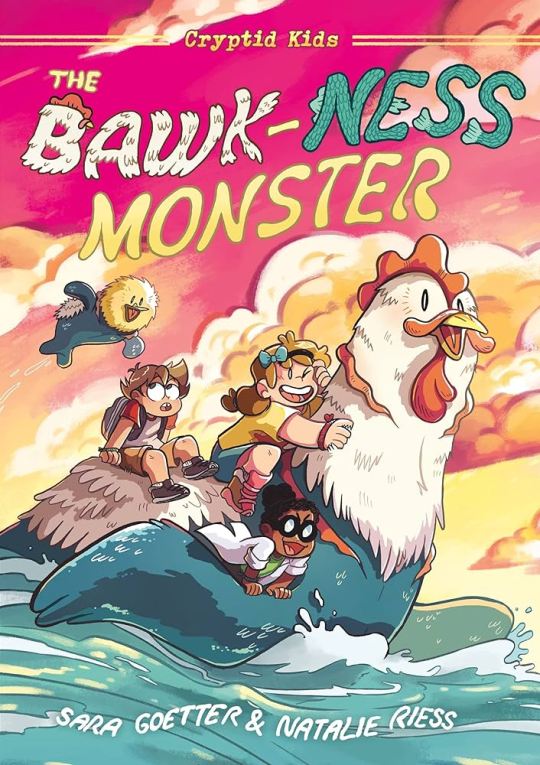
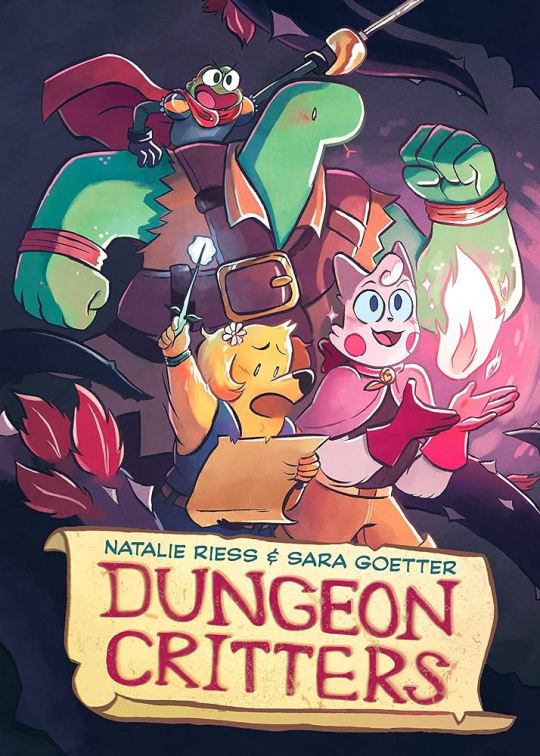
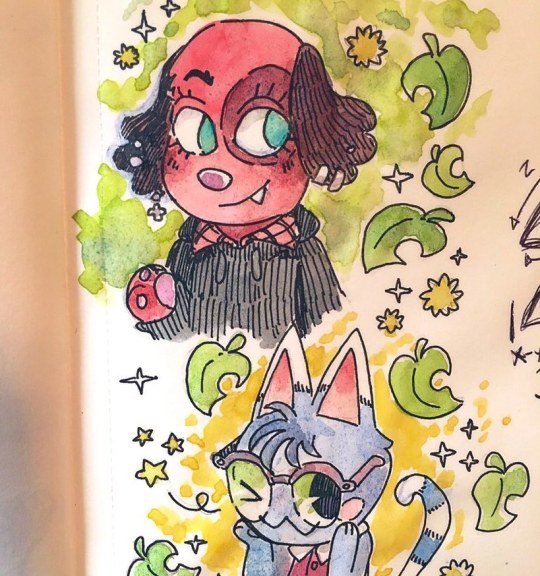
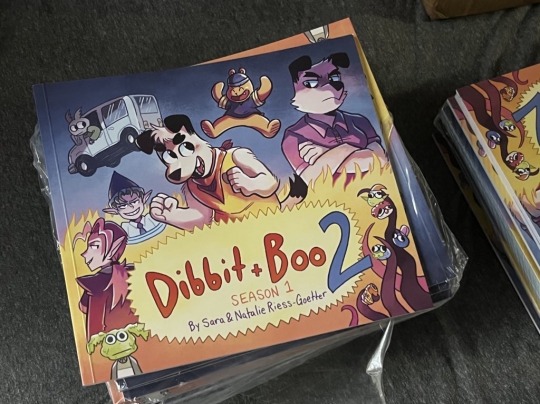
The whole effort of changing the graphic novels to retellings of the first arc feels like a very deliberate move to attact a new audience of kids who are not already entrenched in the fandom.
Like ya, stories about fan-favorite side characters like Brightheart and Feathertail drawn by the same guy who drew the original comics over a decade ago are going to go over well with the longtime fans, but are these going to do anything for the elementry school kids for whom these names have no prior significance and the series is this 100+ book mountain they'd have to start climbing? Probably not as much.
A new start, drawn by these new hip, young artists is going to be a much more effective onboarding for the series. I don't think the fandom is often willing to admitt just how insular the commuinity is, and how completely it's vanished from popular culture outside of its reputation as "that one series everybody used to be into like 15 years ago".
What the franchise really needs more than anything else right now is a new lease on life, something that can break it out of it's insulated shell and get it back into the popular culture, and thats going to require a shakeup, and its going to require letting go some classic, nostalgic elements.
This could be a the start of new era of the brand where onboarding newer fans is going to take priority over pleasing long-term fans, and where going to have to live with that and hopefully not turn the fandom into a toxic hell hole.
10 notes
·
View notes
Photo

In a brief biographical sketch, the crime writer Christopher Fowler, who has died aged 69, claimed he had achieved several of his “pathetic schoolboy fantasies”: releasing an “appalling” Christmas pop single; working as a male model; posing as the villain in a Batman graphic novel; running a Soho night club; appearing in The Pan Book of Horror series; and standing in for James Bond. Rather than examples of Fowler’s wicked sense of humour, all these claims were true. Time Out, meanwhile, called him “an award-winning novelist who would make a good serial killer”.
He was best known for his Bryant & May thrillers, featuring the elderly, venerable detectives Arthur Bryant and John May, who head up the Peculiar Crimes Unit, a department of the London police set up during the second world war to investigate cases that might cause a national scandal or public unrest. The pair had made appearances in some of Fowler’s early novels – Rune (1990), Darkest Day (1993) and Soho Black (1998) – before breaking out into their own long-running series, starting with Full Dark House in 2003.
Bryant, an irascible technophobe, and May, more accepting of the ways of modern life, have been partners for more than 60 years, having first teamed up in 1940 when they were 23 and 19 respectively. The first novel begins with the death by explosion of Bryant; while May investigates, he discovers connections with the pair’s very first case, the killing of a dancer during the blitz, which is told in flashback.
The Gothic air and clashing personalities continued into sequels, each intended to explore a different sub-genre of crime fiction, described by Fowler as “all the devices of classic murder mysteries, including disguised identities, locked room puzzles, surprise ending and nick-of-time rescues”.
The intended one-off novel became six books, then 12 and eventually 20, including two collections of short stories. Central to the series – and many of his other works – was Fowler’s love of London. He found the city endlessly fascinating and delighted in discovering its odder corners and the strangeness of its inhabitants, past and present. “The most bizarre facts in this book are the truest,” he noted in the acknowledgments of The Water Room, the second in the series, published in 2004.
Fowler began writing books alongside a career in the film industry, having co-founded the film promotion agency the Creative Partnership while in his 20s. This gave him the freedom to write what he liked, which made him a publisher’s nightmare: the unclassifiable author. After producing two novels that failed to launch and publishing two humorous titles, How to Impersonate Famous People (1984) and The Ultimate Party Book (1985), Fowler sold two collections of horror stories – City Jitters (1986) and More City Jitters (1988) – to the publisher of his near-neighbour, the novelist and playwright Clive Barker.
He followed this with Roofworld (1988), an urban fantasy novel about battling gangs and secret occult societies who use zipwires and bungee cords to travel above the city – inspired by the interconnected rooftops of London’s densely packed streets and his knowledge of how burglars would break into buildings through the top floor.
Roofworld established some of Fowler’s common themes – warfare between classes, battling evil corporations, and secret worlds existing within touching distance of unsuspecting Londoners – and introduced recurring characters, including DS Janice Longbright, who later served in the Peculiar Crimes Unit.
The real myths and mysteries of London held more interest to him than the supernatural horror of his earlier novels, although that did not stop him writing disturbing and blackly humorous takes on old themes: Rune’s subliminal messages echo MR James’ Casting the Runes; in Red Bride (1992) an ordinary man is seduced by a succubus; and in Spanky (1994) the hero engages in a Faustian pact with a demon.
The family at the heart of Psychoville (1995) are driven out of the suburbs by its change-resistant middle-class community; Disturbia (1996) has its hero uncover the machinations of a secret society; Hell Train (2011) is a homage to Hammer Films; Nyctophobia (2014) is a haunted house story; Little Boy Found (2017, as LK Fox) a psychological thriller; and Hot Water (2022) a murder mystery.
Fowler’s influences included Mervyn Peake’s Gormenghast trilogy (which he called “powerful, black and funny”), John Dickson Carr’s The Hollow Man (“the ultimate in sleight-of-hand”) and JG Ballard (“his ‘five minutes into the future’ books were startling in their prescience”), the latter strongly influencing The Sand Men (2015).
His short story Left Hand Drive was filmed in 1993, and The Master Builder was made into the TV movie Through the Eyes of a Killer (1992), with Tippi Hedren. He won five British Fantasy awards, including for Full Dark House. Other Bryant & May novels won prizes and he was awarded the 2015 Crime Writers’ Association Dagger in the Library award for his body of work. His memoir Paperboy (2009) won the inaugural Green Carnation award.
Fowler was born in Greenwich, south-east London, the son of Lilian (nee Upton), a legal secretary, and William Fowler, a glass-blower and designer of scientific instruments with whom Fowler had a troubled relationship. He grew up reading fantasy, horror and science fiction, graduating from Superman comics to Tolkien and Ballard in his teens.
He was educated at Colfe’s grammar school in Lee before enrolling to study art at Goldsmiths College in 1972, although he left to take up work as a copywriter in various advertising agencies. At the age of 26 he set up the Creative Partnership with the producer Jim Sturgeon to market films, becoming a one-stop shop producing trailers, posters and commercials for radio and TV.
The company worked on campaigns for Bernardo Bertolucci, Peter Greenaway, Ridley Scott, Quentin Tarantino, David Cronenberg, Mike Leigh and many others, on movies ranging from Alien – they were paid £20 for the line “In space no one can hear you scream” – and The Cook, the Thief, His Wife and Her Lover, to GoldenEye and Reservoir Dogs.
The Creative Partnership opened an office in Beverley Hills and Fowler spent the early 80s in the US, but could find only badly paid, uncreative work. With time on his hands he began writing, finding success after returning to London. He was able to maintain a steady output, including a graphic novel (Menz Insana, 1997), a stage play (Celebrity, produced at the Phoenix, London, in 2010), and the War of the Worlds video game (2011) for Paramount.
He also wrote a 319-episode series of short essays on forgotten authors for the Independent on Sunday, partly collected as Invisible Ink (2012) and The Book of Forgotten Authors (2017). Essay 319 featured Christopher Fowler, described as “a typical example of the late 20th-century midlist author ... [whose] ability of turning his hand to most literary forms granted him the honorary title of ‘Wordslut’”.
Fowler was diagnosed with a rare form of cancer in March 2020. He worked on his 20th Bryant & May novel, London Bridge is Falling Down (2021), while undergoing chemotherapy in hospital, and the following year published Bryant & May’s Peculiar London, in which his characters explore the true life eccentricities and elusive byways of the city. His third volume of memoirs, Word Monkey (following Paperboy and Film Freak, 2013), is due out in August.
Fowler formed a civil partnership in 2007 with the TV executive Peter Chapman, and 10 years later they married. Peter survives him, along with his younger brother, Steven.
🔔 Christopher Robert Fowler, author and screenwriter, born 26 March 1953; died 2 March 2023
Daily inspiration. Discover more photos at http://justforbooks.tumblr.com
14 notes
·
View notes
Text
Pirate Games on iOS and the Enduring Allure of Pirates in Video Games
Pirates have always held a special place in our collective imagination, and this enduring fascination has translated seamlessly into the realm of video games. As technology advances, the world of digital piracy has evolved to provide gamers with thrilling adventures on the high seas. In this article, we will set sail into the world of Pirate Games Ios and explore the enduring allure of pirates in video games.

Pirates in Popular Culture
Pirates have been romanticized for centuries, thanks to legends like Blackbeard, Captain Kidd, and the infamous pirate haven of Tortuga. This romanticization has found its way into popular culture through novels, movies, and, of course, video games. Pirates embody the spirit of adventure, freedom, and rebellion, making them perfect protagonists for immersive gaming experiences.
The Appeal of Pirate Games on iOS
With the rise of mobile gaming, pirate-themed games have made a significant splash on the iOS platform. These games cater to players on the go, offering a swashbuckling experience wherever you are. Here are some key reasons why pirate games have thrived on iOS:
Accessibility: iOS devices, including iPhones and iPads, are widely accessible, ensuring that players of all ages and backgrounds can enjoy pirate adventures at their fingertips.
Casual Gaming: Pirate games on iOS often cater to the casual gaming crowd. Their pick-up-and-play nature allows players to delve into thrilling piracy on short breaks or during commutes.
Touchscreen Controls: The touch controls on iOS devices provide a tactile experience that complements the pirate theme. Players can navigate ships, fire cannons, and engage in swordfights with intuitive swipes and taps.
Stunning Graphics: Modern iOS devices boast impressive graphical capabilities. This ensures that pirate games can deliver stunning visuals, from vast ocean expanses to detailed pirate ships and tropical islands.
Top Pirate Games on iOS
Pirate Kings: A social multiplayer game that lets players build their islands, spin wheels for resources, and attack their friends' islands. It combines pirate themes with elements of resource management and strategy.
Assassin's Creed: Pirates: From the acclaimed Assassin's Creed series, this game lets players explore the Caribbean, engage in naval battles, and uncover hidden treasures.
Plunder Pirates: A real-time strategy game where players build their pirate island, assemble a fleet, and engage in epic sea battles. It offers a blend of city-building and naval warfare.
The Pirate: Plague of the Dead: Set in the Golden Age of Piracy, this game allows players to command their ships, explore an open world, and take on various quests.
Pirates in Video Games: A Timeless Theme
The allure of pirates extends well beyond iOS games and into the broader world of video gaming. From classic titles like "Sid Meier's Pirates!" to the sprawling adventures of "Sea of Thieves," video games have continued to capture the essence of piracy. These games offer:
Freedom and Exploration: Many pirate games provide vast open worlds for players to explore, giving them the freedom to chart their course and live out their pirate fantasies.
Multiplayer Engagement: Games like "Sea of Thieves" take the pirate experience to the next level with online multiplayer, allowing players to crew a ship together and face challenges on the high seas.
Evolving Stories: Pirate games often incorporate evolving narratives, where players can uncover mysteries, make alliances, and progress through dynamic storylines.
Naval Combat: A staple of pirate games is the thrilling naval combat, complete with cannon fire, ship maneuvering, and epic battles against other pirates and monstrous sea creatures.
Conclusion
Pirate games on iOS and in the broader video game world continue to thrive due to their timeless appeal. The allure of piracy, with its adventurous spirit, freedom, and excitement, resonates with gamers of all ages. Whether you're looking for a quick mobile escape or a grand adventure on your gaming console or PC, the world of pirate games is as captivating as ever, offering an endless sea of virtual treasure to discover and plunder. So, grab your cutlass, hoist the Jolly Roger, and set sail on the digital high seas—it's a pirate's life for us!
0 notes
Text
Episode 164 - Military Fiction
This episode we’re talking about Military Fiction! We discuss jingoism, how war is hell, war stories vs military fiction, clichés, historical fiction, and more!
You can download the podcast directly, find it on Libsyn, or get it through Apple Podcasts, Stitcher, Google Podcasts, or your favourite podcast delivery system.
In this episode
Anna Ferri | Meghan Whyte | Matthew Murray | Jam Edwards
Things We Read (or tried to…)
A Summer for War by Darrell Duthie
All Quiet on the Western Front by Erich Maria Remarque, translated by Arthur Wesley Wheen
Battlefields, vol. 1: Night Witches by Garth Ennis and Russ Braun
Battlefields, vol. 6: Motherland by Garth Ennis and Russ Braun
Battlefields, vol. 8: The Fall & Rise of Anna Kharkova by Garth Ennis and Russ Braun
Night Witches (Wikipedia)
The Yellow Birds by Kevin Powers
Rebel Seoul by Axie Oh
Code Talker: A Novel About the Navajo Marines of World War Two by Joseph Bruchac
Code talker (Wikipedia)
Stalingrad by Vasily Grossman, translated by Robert Chandler
The Fallen of World War II (infographic)
Other Media We Mentioned
Call of Duty (Wikipedia)
No novels, but there are some graphic novels
Catch-22 by Joseph Heller
Slaughterhouse-Five by Kurt Vonnegut Jr.
Mother Night by Kurt Vonnegut Jr.
The Things They Carried by Tim O'Brien
MASH: A Roman About Three Army Doctors by Richard Hooker
M*A*S*H (TV series) (Wikipedia)
Call of Duty: Black Ops (Wikipedia)
Figuring out what to link to for Modern Warfare is too much effort
Spec Ops: The Line (Wikipedia)
Band of Brothers (miniseries) (Wikipedia)
Saving Private Ryan (Wikipedia)
For Whom the Bell Tolls by Ernest Hemingway
The Hunt for Red October by Tom Clancy
If anyone has a good link about the connections between Marvel movies and militaries, please let us know!
John Wick (Wikipedia)
Coming Home (1978 film) (Wikipedia)
Forever War by Joe Haldeman
Master and Commander by Patrick O'Brian
Sgt. Rock (Wikipedia
Code Name Verity by Elizabeth Wein
The Bridge Over the River Kwai by Pierre Boulle
Onward Towards Our Noble Deaths by Shigeru Mizuki
Inglourious Basterds (Wikipedia)
Preacher (comics) (Wikipedia)
The Boys (comics) (Wikipedia)
The Transformers: More than Meets the Eye (TFWiki)
Suicide Squad (Wikipedia)
His Majesty's Dragon by Naomi Novik
Links, Articles, and Things
Finish It! Podcast
Remembrance Day (Wikipedia)
Episode 013 - Spies and Espionage
Episode 055 - Military Non-Fiction
W.Y. Boyd Literary Award for Excellence in Military Fiction
War comics (Wikipedia)
Protests against the Iraq War (Wikipedia)
United States and the International Criminal Court (Wikipedia)
Episode 106 - Alternative/Alternate History
15 Military Fiction books by BIPOC (Black, Indigenous, & People of Colour) Authors
Every month Book Club for Masochists: A Readers’ Advisory Podcasts chooses a genre at random and we read and discuss books from that genre. We also put together book lists for each episode/genre that feature works by BIPOC (Black, Indigenous, & People of Colour) authors. All of the lists can be found here.
Sisters in Arms by Kaia Alderson
Where I'm Bound by Allen B. Ballard
March Toward the Thunder by Joseph Bruchac
At Night All Blood is Black by David Diop, translated by Anna Moschovakis
Flying High by Gwynne Forster
This Light Between Us: A Novel of World War II by Andrew Fukuda
Ocean of Words by Ha Jin
War Trash by Ha Jin
Standing at the Scratch Line by Guy Johnson
The American Granddaughter by Inaam Kachachi, translated by Nariman Youssef
The Shadow King by Maaza Mengiste
Miracle at St. Anna by James McBride
Two Trails Narrow by Stephen McGregor
Captain Blackman by John A. Williams
Black Cloud Rising by David Wright Faladé
Give us feedback!
Fill out the form to ask for a recommendation or suggest a genre or title for us to read!
Check out our Tumblr, follow us on Twitter or Instagram, join our Facebook Group, or send us an email!
Join us again on Tuesday, December 20th we’ll be talking about our favourite books we read in 2022!
Then on Tuesday, January 3rd we’ll ring in the new year by discussing the genre of Sports non-fiction!
1 note
·
View note
Text
Uncharted 2 pc game

You start the game in a very unheroic position. The puzzles are not easy, but they are not so difficult that you will give up in frustration, as happens in many games. The game has a fascination with heights many of the puzzles that you have to figure out involve ways to scale big walls or buildings, all the while looking down with dizzying views. This effect is so well done that you’ll spend time just marveling at the detailed objects that are part of every colorful scene. The colors of the environment are sharper and bright than you would ordinarily see in real life. The art style of the game is artificially vibrant. You can run and spray bullets wildly behind you, as you do when you’re trying to flee a jeep that is trying to run you over in a narrow alley. By contrast, the weaponry that Drake uses fits the game and it feels good when you aim, shoot and take down enemies. By comparison, my criticism of Ubisoft’s Avatar the Game is that the rainforest planet imagery looks fantastic, but the game play is weak. A game, after all, is not a travel video. Of course, good scenery is just a starting point. At another point, as you’re escaping through a jungle, you can see a view of the distant beach and shimmering ocean from atop a cliff. In one scene atop a tall building in Nepal, you can turn your character’s view and see an entire city in 3-D for miles in any direction, with the beautiful Himalaya mountains as a backdrop. That means that you can see some truly stunning scenes. While Naughty Dog lead designer Richard Lemarchand told us that the original Uncharted used about 30 percent of the PS 3’s processing power with its Cell microprocessor and Nvidia graphics chip, this game exploits probably 90 percent of the capability.

It has strong, fun game play and it exploits the graphics horsepower of the PS 3 to the fullest. Before I turned to Modern Warfare 2, I just had to finish playing Uncharted 2 because it was just too fun and immersive to put down, like a page-turning action novel. But what makes this game stand above the rest - and earned it a Metacritic aggregate review score of 96 out of 100 - is its execution.

Chloe says, “I sense some history here.” And Elena deadpans, “I’m Elena, last year’s model.”

The game’s best line is when Drake and his fellow thief Chloe Frazer run into Drake’s former flame, Elena. Drake is joined by his pal Sully and two fierce fighting women who love him but don’t want to admit it and compete for his attention. The main character, Nathan Drake, is a down-on-his luck type who stumbles back into a world of thieves and mercenaries who lead him onto a journey to find Shambhala, a legendary Himalayan valley that Marco Polo supposedly discovered many centuries ago. Three top investment pros open up about what it takes to get your video game funded.

0 notes
Text
At Present Within The App Store -- The Most Effective Free Apps, New Apps And App Updates
Listed below are a few of the best free apps, app updates and new apps that have landed in the App Retailer not too long ago. All app prices are USD and topic to change. Some deals could expire shortly, so grab them while you possibly can.
Apps Now Free
Cycloramic for iPhone 5/5S [iOS Universal; Now free, down from $0.99] Cycloramic Revolutionizes the way in which you are taking panoramic pictures and videos!
Shades: A Simple Puzzle Sport [iOS Universal; Now free, down from $1.99] A mesmerizing, calming, zen-like experience that shortly evolves right into a devilishly difficult puzzler.
Minecraft Actuality [iOS Universal; Now free, down from $1.99] Officially supported by Mojang. Minecraft Actuality allows you to combine Minecraft worlds with the actual world!
netwars / The Butterfly Attack [iOS Universal; Now free, down from $2.99]The interactive graphic novel "The Butterfly Assault" tells a dramatic story of modern warfare, friendships and betrayal
New and Notable Apps
BeatHawk [iPad; $4.99] BeatHawk is a portable music manufacturing studio adapted from UVI's skilled product line, delivering studio-high quality sound and a lightning-quick workflow.
Shifts - Shift Worker Calendar [iPhone; $1.99] Shifts is the quickest and easiest method to enter and view your work shifts on iPhone.
SimCity™: Full Edition [OS X; $39.99] The definitive city simulator arrives on the Mac App Store!
Updates you don't need to overlook
Marco Polo: Discover Your Telephone by Shouting MARCO! [ minecraft servers list ] If you've got ever misplaced or misplaced your iPhone, iPad, or iPod contact someplace nearby but can't fairly remember the place, the Marco Polo app will assist you quickly find your device with simply your voice. Model 2.Zero brings the following adjustments:
Our largest replace yet, prepared for the new yr. We've added nice new features, new voices, customized responses, widgets, and improved your complete app expertise!
Customized Responses are right here! Now your device can ring again extra than just POLO!
Choose from responses like "I'm Over Right here", "Who's There?", "iPhone Reporting", and lots of others. Even enter your individual phrase!
New iOS eight Close by Widget; skip shouting and discover other gadgets right from Notification Heart
Drastically improved voice recognition
Added new voices like Film Guy and WICKED, together with supporter exclusives like ARNOLD, BUSH, KERMIT, SLY, and more
The app is now Universal to support the iPad, and completely optimized for iOS 8 and the iPhone 6 and iPhone 6 Plus
Strides: Targets & Habits Tracker [iOS Universal; Free] Strides is the easiest method to trace all of your goals and habits in one place, with versatile reminders and stunning charts to maintain you motivated. Version 3.Zero brings the following changes:
This is a large replace:
Sync securely between iPhone, iPad & Internet
Quicker Logging - Log right on the Dashboard
Log Notes - Optional textual content description
Fastened tons of bugs (incl. new tracker crash)
Dangerous Habits & Consecutive choices
Cleaned up interface and setup course of
Mounted and Redesigned Milestones
Eliminated rating immediate popup
Launch on final screen seen
Sustainable business mannequin
1 note
·
View note
Note
If/when they make a Joe/Nicky prequel movie, what are some of the Dos and Don’ts for them, with regards to historical accuracy. Like, what do you think they should include, and what do you think they should avoid?
Oof. This is a GREAT question, and also designed to give me a chance to ramble on in a deeply, deeply self-indulgent fashion. That is now what will proceed to happen. Consider yourself warned. So if they were miraculously to be like “well that qqueenofhades person on tumblr seems like she knows what she’s talking about, let’s hire her to consult on this production!”, here are some of the things I would tell them.
First off, a question I have in fact asked my students when teaching the crusades in class is whether you could actually show the sack of Jerusalem on screen. Like... if you’re making a film about the First Crusade, what kind of choices are you going to make? What narrative viewpoint are you going to uphold throughout the story? Are you actually going to show a slaughter of Muslim and Jewish inhabitants that some chroniclers described as causing enough blood to reach up to the knees of horses? (Whether it actually did this is beside the point; the point is that the sack went far beyond the accepted conventions of warfare and struck everybody involved in it as particularly horrific.) Because when you’re making a film about the crusades, you are also making it by nature for a modern audience that has particular understandings of Christian/Muslim conflict, religious warfare and/or tolerance, the War on Terror, the modern clash over ISIS, Trump’s Muslim ban, and so forth. The list goes on and on. So you’re never making a straight, unbiased historical adaptation, even if you’re going off the text of primary sources. You’re still constructing it and presenting it in a deliberate and curated fashion, and you can bet that whichever way you come down, your audience will pick up on that.
Let’s take the most recent example of a high-profile crusades film: Kingdom of Heaven from 2005. I’ve written a book chapter on how the narrative choices of KoH, aside from its extensive fictionalization of its subject matter to start with, make it crystal clear that it is a film made by a well-meaning Western liberal filmmaker (Ridley Scott) four years after 9/11 and two years after the invasion of Iraq, when the sympathy from 9/11 was wearing off and everyone saw America/Great Britain and the Bush/Blair coalition overreaching itself in yet another arrogant imperial adventure into the Middle East. Depending on how old you are, you may or may not remember the fact that Bush explicitly called the War on Terror a “crusade” at the start, and then was quickly forced to walk it back once it alarmed his European allies (yes, back then, as bad as America was, it still did have those) with its intellectual baggage. They KNEW exactly what images and tropes they were invoking. It is also partly why medieval crusade studies EXPLODED in popularity after 9/11. Everyone recognized that these two things had something to do with each other, or they made the connection somehow. So anyone watching KoH in 2005 wasn’t really watching a crusades film (it is set in the late 1180s and dramatizes the surrender of Jerusalem to Saladin) so much as a fictional film about the crusades made for an audience explicitly IN 2005. I have TONS to say on this subject (indeed, if you want a copy of my book chapter, DM me and I’ll be happy to send it.)
Ridley Scott basically sets it up as the Christian and Muslim secular leaders themselves aren’t evil, it’s all the religious fanatics (who are all made Templars, including Guy de Lusignan, going back to the “evil Templar” trope started by Sir Walter Scott and which we are all so very familiar with from Dan Brown and company). Orlando Bloom’s character shares a name (Balian de Ibelin) but very little else with the eponymous real-life crusader baron. One thing Scott did do very well was casting an actual and well-respected Syrian actor (Ghassan Massoud) to play Saladin and depicting him in essential fidelity to the historical figure’s reputed traits of justice, fairness, and mercy (there’s some article by a journalist who watched the film in Beirut with a Muslim audience and they LOVED the KoH Saladin). I do give him props for this, rather than making the Evil Muslim into the stock antagonist. However, Orlando Bloom’s Balian is redeemed from the religious extremist violence of the Templars (shorthand for all genuinely religious crusaders) by essentially being an atheistic/agnostic secular humanist who wants everyone to get along. As I said, this is a film about the invasion of Afghanistan and Iraq made three years after 9/11 more than anything else, and you can really see that.
That said, enough about KoH, back to this presumable Joe/Nicky backstory. You would obviously run into the fact that it’s SUPER difficult to make a film about the crusades without offending SOMEBODY. The urge to paint in broad strokes and make it all about the evil Westerners invading is one route, but it would weaken the moral complexity of the story and would probably make it come off as pandering to guilty white liberal consciences. Are we gonna touch on the many decades of proto-crusading ventures in Iberia, Sicily, North Africa, and other places, and how the eleventh century, especially under Pope Gregory VII, made it even thinkable for a Christian to be a holy warrior in the first place? (It was NOT normal beforehand.) How are we going to avoid the “lololol all religion sucks and makes people do crazy things” axe to grind favoured by So Very Smart (tm) internet atheists? Yes, we have to demonstrate the ultimate horror of the crusade and the flawed premises it was based on, but we can’t do that by just showing the dirty, religiously zealot medieval people doing that because they don’t know any better and are being cynically manipulated in God’s Name. In other words (and the original TOG film did this very well) we can’t position ourselves to laugh at or mock the crusader characters or feel confident in looking down on them for being Dumb Zealots. They have to be relatable enough that we realize we could BE (and in fact already ARE) them, and THEN you slide into the horror and what compels them to do those kinds of things, and THAT’S when it hits. Because take a look at the news. This is happening around us right now.
Obviously, as I was doing in my First Crusade chapter in DVLA, a lot of this also has to spend time centering the Muslim point of view, the way they reacted to the crusade, the ways in which Yusuf as an Isma’ili Shia Muslim (Kaysani is the name of a branch of Isma’ili Shi’ites, he has a definite historical context and family lineage, and hence is almost surely, as I wrote him, a Fatimid from Egypt) is likewise not just A Stock Muslim. In this case, obviously: Get actual Muslims on the set to advise about the details. Don’t make stupid and/or obvious mistakes. Don’t necessarily make the Muslims less faithful or less virtuous than the Christians (even if this is supposed to praise them as being “less fanatic” than those bad religious Catholics). Don’t tokenize or trivialize their reaction to something as horrific as the sack of Jerusalem, and don’t just use dead brown bodies as graphic visual porn for cheap emotional points. Likewise, it goes without saying, and I don’t think they would anyway, but OH MY GOD DON’T MAKE THIS INTO GAME OF THRONES GRIMDARK!!!! OH MY GOD!!! THERE IS BEAUTY AND THERE IS LIGHT AND THERE IS POETRY AND THAT’S WHY IT HURTS SO MUCH WHEN IT’S DESTROYED! AND THE CHOICES THAT PEOPLE MAKE TO DESTROY THOSE THINGS HAVE TO BE TERRIFYINGLY PLAUSIBLE AND FAMILIAR, BECAUSE OH MY GOD!!
Next, re: Nicolo. Evidently he is a priest or a former priest or something of the sort in the graphic novel, which becomes a bit of a problem if we want him to actually FIGHT in the crusades for important and/or shallow and/or OTP purposes. (I don’t know if they address this somehow or Greg Rucka is not a medieval historian or whatever, but never mind.) It was a Major Thing that priests could not carry weapons, at least and especially bladed weapons. (In the Bayeux Tapestry, we have Odo, the bishop of Bayeux, fighting at the battle of Hastings with a truncheon because he’s a clergyman and can’t have a sword). They were super not supposed to shed blood, and a broadsword (such as the type that Nicky has and carries and is clearly very familiar with) is a knight’s weapon, not a clergyman’s. The thing about priests was that they were not supposed to get their hands dirty with physical warfare; they could (and often did) accompany crusade armies, bishops were secular overlords and important landholders, monks and hermits and other religious preachers were obviously part of a religious expedition, and yes, occasionally some priests would break the rules and fight in battle. But this was an exception FAR more than the rule. So if we’re going by accuracy, we have Nicky as a priest who doesn’t actively fight and doesn’t have a sword, we have him as a rule-breaking priest with a sword (which would have to be addressed, and the Templars, who were basically armed monks, weren’t founded until 1119 so he can’t be one of those yet if this is still 1099) or we just skip the priest part and have him as a crusader with a sword like any other soldier. If he was in fact a priest, he also wouldn’t be up to the same standard of sending into battle. Boys, especially younger sons of the nobility, often entered the church at relatively early ages (12 or 13), where it was treated as a career, and hence they stopped training in arms. So if Nicky is actually out there fighting and/or getting killed by Yusuf several times for Important Purposes, he’s... almost surely not a priest.
Iirc, they’ve already changed a few things from the graphic novel (I haven’t read it, but this is what I’ve heard) so they can also tweak things to make a new backstory or a hybrid-new backstory in film-verse. So once we’ve done all the above, we still have to decide how to handle the actual sack of Jerusalem and massacre of its inhabitants, the balance between violence comparable to the original TOG film and stopping short of being exploitative (which I think they would do well), and the aftermath of that and the founding of the new Latin Christian kingdom. It would have to, as again the original film does very well, avoid prioritizing the usual players and viewpoints in these events, and dig into presenting the experiences of the marginalized and way in which ordinary people are brought to the point of doing these things. It doesn’t (and frankly shouldn’t) preach at us that U.S. Invasions Of The Middle East Are Bad (especially since obviously none of the characters/people/places/events here are American at all). And as I said already but bears repeating: my god, don’t even THINK about making it GOT and marketing it as Gritty Dramatic Medieval History, You Know It’s Real Because They’re Dirty, Violent, and Bigoted!
Also, a couple tags I saw pop up were things like “Period-Typical Racism” and “Period-Typical Homophobia” and mmm okay obviously yes there are these elements, but what exactly is “period typical?” Does it mean “using these terms just because you figure everyone was less tolerant back then?” We know that I, with my endless pages of meta on medieval queer history, would definitely side-eye any attempts to paint these things as Worse Than Us, and the setting alone would convey a sense of the conflict without having to add on gratuitous microaggressions. I basically think the film needs to be made exactly like the original: centering the gay/queer perspectives of marginalized people and people of color, resisting the urge for crass jokes at the expense of the identity of its characters, and approaching it with an awareness of the deep complexity and personal meaning of these things to people in terms of the historical moment we’re in, while not making a film that ONLY prizes our response and our current crises. Because if we’re thinking about these historical genealogies, the least we can do (although we so often aren’t) is to be honest.
Thanks! I LOVED this question.
#history#medieval history#kingdom of heaven#joe x nicky#long post#persephone-rose-r#ask#the old guard meta
250 notes
·
View notes
Text
TerraMythos 2022 Reading Challenge - Book 1 of 26
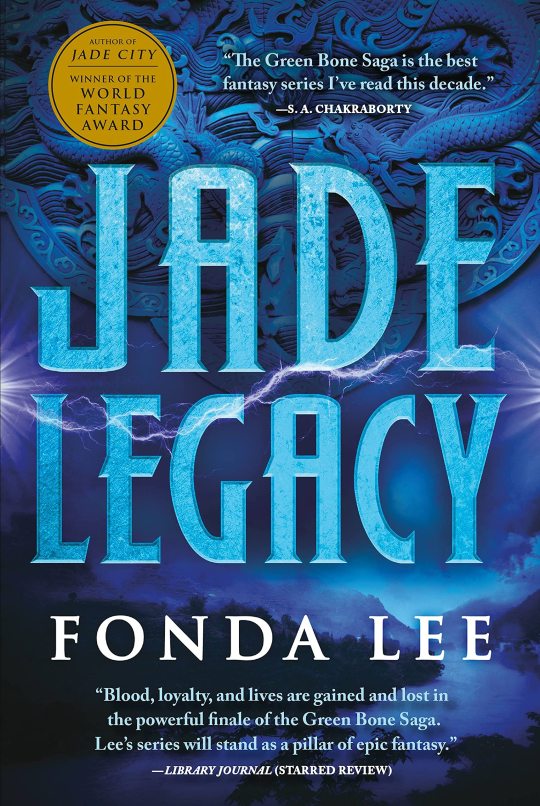
Title: Jade Legacy (The Green Bone Saga #3) (2021)
Author: Fonda Lee
Genre/Tags: Fantasy, Urban Fantasy, Female Protagonist, LGBT Protagonist, Third-Person
Rating: 8/10
Date Began: 12/01/2021
Date Finished: 01/09/2022
Jade is a magical substance which enhances the physical abilities of those who wear it. Once the cultural birthright of Green Bone warriors in the isolated nation of Kekon, it now commands international attention as a weapon of war. The Kaul family of the No Peak clan finds themselves in a position to shape the future of jade and their country as a whole. But they must contend with the Mountain, a ruthless rival clan that seeks to destroy No Peak and unite Kekon under a single banner. As the Kauls grow older and decades pass, they must bear witness to the future they’ve wrought— and what this means for the next generation of Green Bones.
On his deathbed, the disgraced king is said to have lamented, “I’ll be remembered not for who I was, but for what I wasn’t. Perhaps it’s for the best. Let the gods judge me for what I did not do.”
Review, content warnings, and (vague) spoilers below the cut.
Content warnings for the book: Depicted-- Graphic violence, gore, death, mass death, terrorism, torture, graphic sexual content, abuse, ableism, misogyny, homophobia, recreational drug use, addiction/ overdosing/withdrawal, non-consensual drugging, suicide, animal death, child death, warfare, war crimes, PTSD.
Mentioned: R*pe, animal abuse, human trafficking.
Jade Legacy is the definitive conclusion to The Green Bone Saga, and Fonda Lee elevates the scope of the novel to do the ending justice. While the previous entries take place around 1-3 year timelines, Jade Legacy covers a staggering 20+ years in the lives of its characters. It depicts the main cast as they grow older and change, while also exploring the younger generation and their future. There’s so much material that Jade Legacy feels like three books packed into a single entry. It’s an intense, emotional conclusion to the series, and while it took me a while to get through, I thoroughly enjoyed it.
I’ve discussed this series’ incredible worldbuilding before, and it pays off to its fullest extent in this book. Jade City focused on Janloon and the island nation of Kekon. Jade War expanded this to an international setting, detailing world powers, their interactions, and impacts on Kekon and the No Peak clan. Jade Legacy continues the momentum via its longer timeline. We get to see the full impact of jade, clan culture, covert war, terrorism, and more as they unfold over decades. Concepts and plot threads introduced in earlier books bring lasting consequences. It’s neat to see how Lee’s world mirrors our own while also maintaining its fantastical elements. Several events have uncanny parallels to recent human history. The story ends roughly at the technological level of the modern day, with Internet and cell phones becoming commonplace. But Kekon’s magic jade and worldwide significance continues to be a central part of the story.
One of my favorite things about The Green Bone Saga is its unpredictability. Jade Legacy takes this to an extreme. Minor characters return to shape the story in major ways. A chapter that begins as a routine board meeting ends with an assassination attempt, a terrorist attack, and a desperate search for survivors. Or a night out partying results in the brutal, tragic death of a major character. There’s always tension in this series, because any sense of security is inherently false. Everything makes sense when you finish and examine the story as a whole, but in the moment, it feels like anything is on the table.
I also liked some of Jade Legacy’s characterization. Perhaps most surprising is how this book made me reflect on freaking Bero. Bero is a (deliberately) unlikable recurring character— literally the first perspective we get. He’s a selfish loser, completely unremarkable… except he shapes many major events in the story. No matter the dire straits (or how much I rooted for his demise), human cockroach Bero always survives. Jade Legacy explores why Bero’s such an integral part of the story. How can he touch the lives of the main cast so often, yet they’re utterly oblivious to it? How does he manage to escape certain death again and again? It’s a level of meta-analysis I didn’t expect Lee to explore, but I’m glad she did, because I appreciate his character so much more. Him being the unnamed taxi driver at the end— taking Anden to the Twice Lucky, no less! — was a nice final jab and symbolic bookend to cap off the series.
The ambitious 20+ year timeline has its positives. It’s full of intricate detail and satisfying narrative payoffs. There’s nothing quite like seeing familiar characters grow old and witness their, well, legacy. Characters we know as children become adults who struggle to find their place in a changing world. We also see how an incremental shift in attitude and culture can change everything. The youth of No Peak and the Mountain don’t have the same hatred for each other as their parents. Much of the second half of the book focuses on the old guard relinquishing the future to the next generation, and the potential this brings for peace and positive change. It’s surprisingly optimistic for an otherwise brutal series.
But I admit there’s some drawbacks to the wider scope. Characterization suffers a little. In the first two books, we got to see the full impact of events and how they affected the characters. While that’s somewhat true in Jade Legacy, there are multiple occasions where something major happens right before a multi-year time skip. Thus we see the immediate reaction to an event, but then miss out on the aftermath. Sometimes characters reflect on past events at later points in the book, but by then, so much time has passed that it’s less real and immediate. It’s like checking in on an old friend rather than experiencing their struggles firsthand. The next-gen characters also feel underdeveloped outside of maybe Niko, which is disappointing considering the theme of legacy and succession.
The time jumps come with pacing issues, too. Every time we skip forward, we get lengthy summaries of what happened over the last few months or years before sinking in to the new story arc. I liked how the first two books handled exposition by smoothly integrating it into the story, or even withholding information until its ideal narrative impact. Here it feels more jarring and infodump-y; a list of things that happened and how that affected other things. Some exposition is inevitable, but it took me out of the story in a way previous books simply didn’t.
Despite these negatives, I think the broad timeline was the best choice. I respect Lee for ending this series on a high note rather than dragging it out. At the same time, it’s clear she had an extensive storyline in mind for her world and characters. Jade Legacy feels like an ideal compromise between ending the series and still exploring the remainder of the story.
As far as I’m concerned, Lee did a great job. I may have some complaints, but Jade Legacy is a fitting conclusion to an incredible trilogy. I can’t imagine how difficult it is to write a book that not only covers so much information, but makes it interesting to read about. Lee weaves so many plot threads and character arcs together that I’m still trying to wrap my head around it. While I liked the first two books a little more, I am clearly in the minority. This series deserves so much more attention than it’s received, and I highly recommend it.
#2022 reading challenge#taylor reads#book review#8/10#the funny thing is i wrote a review for brave new world and forgot to post it#and now it's so late it's kind of awkward#so uh. maybe someday it'll show up#anyway. have this review i'm tired of looking at it
6 notes
·
View notes
Text
Go read Animorphs please
Animorphs is a series of books aimed at preteens or something released over the course of the late 90s, finishing up in 2001. It also fucking rules, and it’s a tragedy that most people just know it for the painfully bad CGI on the covers.

Animorphs is almost painfully 90s, with pop culture references that probably wouldn’t land on a modern reader and a hint of that totally radical attitude the decade is now infamous for. I think a lot of the confusion around the series stems from people misinterpreting it as an example of what the series deconstructs- the sort of Saturday morning kids show like Power Rangers where the protagonists beat up the bad guys before going to school and getting caught up in teen drama. The truth is, Animorphs is a war story, with the trauma and brutality associated with that, as the more normal aspects of its characters lives slowly fall away. In some of the later books, the characters do still technically go to school, but their grades are suffering, they’re tired all the time from the guerrilla warfare they partake in after hours, they’re constantly paranoid, and substantially more reclusive than they once were. People die in this series- in fact the opening scene has an important character fucking devoured by the main villain. The main villains, the Yeerks, are a parasitic species of worms that take over people’s brains, slowly infiltrating earth from the ground up, while the “good guy” alien species, the Andalites, are snobby space elf centaur people who would probably rather wipe out the earth themselves than let the Yeerks take it over, it’s fucking bleak!

Fun fact: K.A. Applegate had fairly simple alien designs with the idea that a live-action adaptation of it wouldn’t be too hard, before getting asked to redesign them landing us with the weird as fuck designs we got. Then, of course, when it did get adapted, they couldn’t capture that and it ended up looking like shit.
This is not to say that the series doesn’t have its levity- shenanigans are allowed to ensue, and banter between the 6 Animorphs is pretty enjoyable, but it largely ends up as a stark contrast to the series’s more gripping moments. Ultimately it cannot be that bad, seeing as it is effectively a series for children- a constant reminder of this being that the whole series is in small books with a larger font size- but it’s surprising just how much the author, K.A. Applegate, was able to get away with while still publishing under the Scholastic name.

There are a total of 54 books in the main series, and I have read probably most of them. Unfortunately, of the brutal final act, I’ve only read like 2 of the books, including the last one, but I can confirm that the vast majority are worth the time. With that said, a big chunk of the second half of the series is ghostwritten, and often filler, but a lot of them are still worth the time. Maybe it’s nostalgia speaking, but most of them still hold up in my eyes. Book #26, the Attack, is the last one of the main series before ghostwriters mostly took over (until the last two), and it’s just a good sci-fi story, with the protagonists thrust into a conflict completely unrelated to the main story by the whims of an errant, if largely benevolent, god, being his champions in yet another struggle against his rival. It’s weird and cool, finally has payoff for all the Jake/Cassie teasing the series had been doing, and ends on a touching note that shows that not all hope is lost, which is always a good message.

(I haven’t read this one, but I reallly want to~)
Before I go I’d like to give a brief shout-out to 8 of the 10 books outside the main series- the choose your own adventure books aren’t great- that form the Megamorphs series and the Chronicles. The Megamorphs books are longer, semi-canon adventures featuring multiple perspective characters instead of the usual one, and have pretty wild, TV Special-esque plotlines- the second one, In the Time of Dinosaurs, is pretty self-explanatory, but the third, Elfangor’s Secret, also deals with time travel. The Animorphs end up at fucking D-Day by the end of it, with Tobias (?) killing Hitler but it doesn’t even matter because all the timeline fuckery has made it so he’s just some random tank driver. Jake actually dies, after all the insane shit he lives through, dead to a bullet in the face! It’s a romp. On the other hand, the Chronicles series is essentially backstory for the alien characters, and while I’ve only read two of them, both of them have a lot of thought and heart put into them, establishing a level of tragedy for the characters and species involved that makes what happens to them in the main series even worse overall.
Ultimately the series might be a little kiddy for an adult reader, but I still would give it a shot. You don’t know what you’ve been missing, and that’s okay. The first book was recently adapted into a graphic novel, and I’m hoping that can spur a renewed interest in the series, because it’s worth it.
5 notes
·
View notes
Text

“Caught you…”
Modern Warfare 2: Ghost Comic
#even as an illustration he is SO fine#simon ghost riley#simon riley#Modern Warfare 2#MW2#call of duty mw2#ghost mw2#ghost cod#call of duty#ghostedit#simonrileyedit#Modern Warfare 2: Ghost comic#Warzone#modern warfare comic#modern warfare graphic novel
165 notes
·
View notes
Text


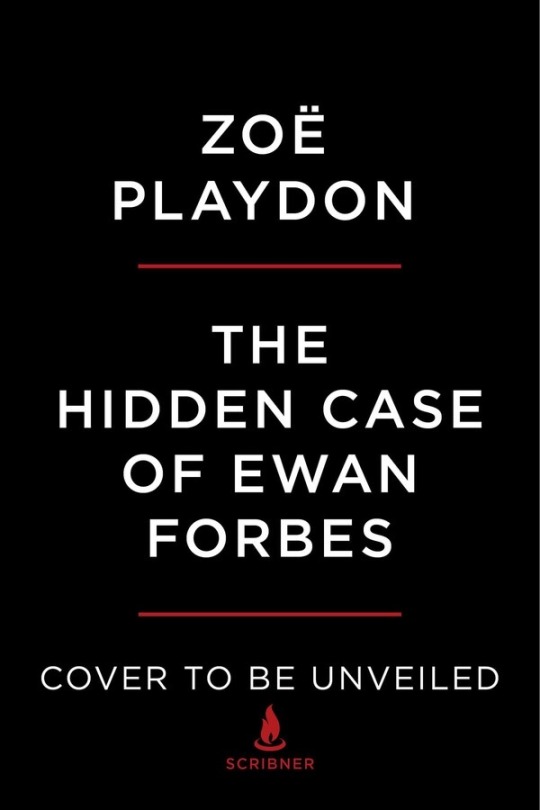
I originally named/started this blog with the intention of talking about books. Then the pandemic began and anxiety about keeping my students safe and about the well-being of my family dialed my not inconsiderable anxiety up to the point that concentrating on the potent spell cast by words on a page simply wasn’t in me. I typically read dozens of books (slowly) at the same time - but I found myself unable to even handle graphic novels.
The chaos of 2020-21 had a silver lining, though. While my interest in reading waned, I fell in love with a plucky Corporal and his patrician Major, began to write every day, and made some friends that I intend to keep with me until the end of the road. As I ease back into reading, however, I wanted to begin to dedicate some of this blog to books - read, borrowed, bought, or pre-ordered.
Since Maxwell Q. Klinger and Charles Emerson Winchester III have blessed me by featuring in so many stories, let’s kick things off with some Klingchestrian titles (hey, if scholars can say “Eliotian,” that is a completely fair adjective):
[A book I’m reading]
The Forsyte Saga - One of the late nineteenth-century works I meant to hit in graduate school, but never quite managed, this one looks at a wealthy family striving to maintain its standard of living as the world changes - and that feels very Winchester apropos to me!
[A recent purchase]
M*A*S*H in Iraq - a book of photographs that pairs moments from the classic tv show with shots of modern warfare to remind us how far we’ve not yet come.
[A pre-order]
The Hidden Case of Ewan Forbes - While Klinger was written as a straight character who just enjoyed creating his costumes, I think he makes a fine early representative for the LGBTQIA+ community/ the Arabic community. This book looks at a case that might have sped up the cause for trans rights - if it had not been hidden.
2 notes
·
View notes
Text
HBO Real Time Guests: Friday Nov. 13, 2020
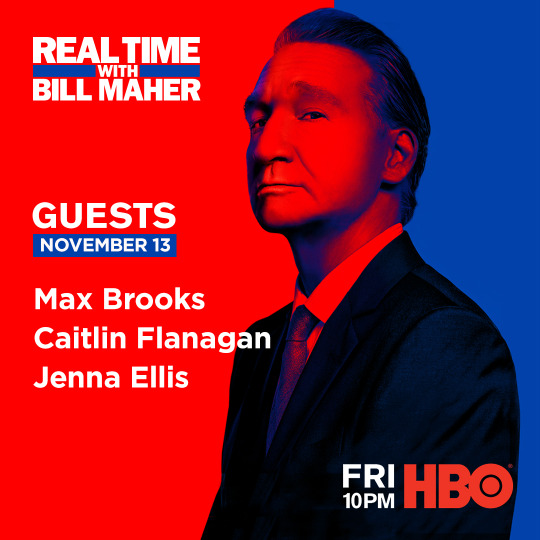
Guest List: November 13, 2020
The Interview:
Jenna Ellis is a constitutional law attorney and Senior Legal Adviser for the Trump 2020 campaign.
Twitter: @JennaEllisEsq
The Panel:
Caitlin Flanagan is a Staff Writer at The Atlantic and author of “Girl Land.”
Twitter: @CaitlinPacific
Max Brooks is a fellow at both the Atlantic Council and the Modern War Institute at West Point. His latest books include the novel, “Devolution,” and the graphic novel, “GERM WARFARE: A Very Graphic History.”
Twitter: @maxbrooksauthor
Overtime will return at a later date. Watch previous episodes on the Real Time YouTube channel.
6 notes
·
View notes
Text
The themes of the cyberpunk and science fiction comic or graphic novel series that I am writing
The themes of the cyberpunk and science fiction comic or graphic novel series that I am writing are adult, adventure, cyberpunk, drama, high fantasy, horror, humor, lgbt, mature, mecha, romance, science fiction, & tragedy, So to the readers you should the ending be positive, bittersweet, negative, or hopeful? At its core its about a genderfluid pansexual superhero who was a former super soldier who has chronic: depression, anxiety, panic attacks, & PTSD and his/her/their mission to find peace, tranquility, & serenity after a Kryptonian lifetime of warfare as a former metahuman and superhuman child soldier who fought until they were an adult spec ops and black ops super soldier. No matter how far they flee violence, carnage, warfare, bloodshed, death, loss, & conflict always seem find them as an alien titan of war. That’s part of the theme of tragedy and why they just want to walk away and give up being a superhero. Alot of people are on the fence between positive and hopeful from everything they have seen the characters go through but feel a cliche positive ending will rob their characters of everything they have been through. It is a balance of a harsh realism that attaches my story to reality but also a hopeful message that makes you feel like is worth fighting to change those harsh aspects of reality. Mature subjects & topics that my cyberpunk science fiction comic book or graphic novel series called Alpha Centurion War: Battle of the Andromeda Galaxy and the Battle of the Milky Way Galaxy that takes place in the 41st century I wrote as an author comic book writer screenwriter and why it’s adult and geared towards a mature audiences. Once this comic book or graphic novel series starts going it goes over modern and futuristic cyberpunk versions of topics such as: Experimentation, child soldiers, proxy wars, private soldiers, & super soldiers. Death, grief, loss, acceptance. Intergalatic: colonialism, imperialism, neocolonialism, occupation, & genocide. Race, racial identity, racism, colorism, antiblackness, cultural identity, anti native racism, & xenophobia. Physical disability, mental disability, mental illnesses (depression, anxiety, OCD, PTSD), self harm, suicide, therapy, coping skills (positive and negative), disfigurement, phantom pain, bionic prosthetics, cybernetic prosthetics, cyberware impant enhancements, ableism. Monogamous relationships and polyamorous relationships. Sex, gender, gender identity, sexuality, sexual orientation, homophobia, & transphobia. Futuristic versions of drug abuse, substance abuse, alcoholism, & addiction
4 notes
·
View notes
Photo

X-O ManoWar Issue #1 - Matt Kindt
Rating: ★★★☆☆
Born under the oppressive thumb of the Roman Empire, Aric of Dacia learned warfare at an early age. It was amid such violence that he was abducted by an alien race. Forced into slavery, he survived where others perished. His escape would come from bonding with a weapon of immeasurable power: the X-O Manowar armor. With it, he returned to Earth…only to find himself stranded in the modern day.
But that was a lifetime ago.
Now, far from home on a strange and primitive new world, Aric has begun a new life. Liberated from his past, he tends to his crops. Free from war. Free from violence. Free from the armor.
But the machinery of death marches his way once again. Conscripted into an alien army and thrown into an unforgiving conflict, the fury inside him finds voice as he is forced to embrace the armor once more. With it, he will decimate armies, topple empires and incite interplanetary warfare as he rises from SOLDIER to GENERAL to EMPEROR to VISIGOTH. They wanted a weapon. He will give them war!
I got this from a mystery Box at London Comic Con 2018 and it had my interest the moment I pulled it from the box. It was a pretty short read and I am interested in the next one in the series. I have the comic book issue #1 not the graphic novel (Issue #1 1-3) which I will link below.
The artwork in this book is absolutely stunning and to be honest that was what I was mainly concentrating on at the time. The skill of the artwork is incredible.
| Paperback |
If you like what I do, please consider buying me a virtual coffee
#books#book#book blog#book blogging#book blogger#bookblr#booklr#comic book#graphic novel#bookworm#book lover#bibliophile#nerd#geek#book nerd
3 notes
·
View notes